Autumn Gear Guide
Find inspiration in our Gear Guide that will keep you out on your bike through wind or rain.
Download NowCycling infrastructure around the world is undergoing a renaissance, blending art, design, and sustainability into some of the most innovative solutions ever created. As cities race to reduce carbon emissions, ease traffic congestion, and encourage healthier lifestyles, they’ve turned to cycling as a practical and eco-friendly answer. These urban areas aren’t just building bike lanes—they’re […]
Cycling infrastructure around the world is undergoing a renaissance, blending art, design, and sustainability into some of the most innovative solutions ever created. As cities race to reduce carbon emissions, ease traffic congestion, and encourage healthier lifestyles, they’ve turned to cycling as a practical and eco-friendly answer. These urban areas aren’t just building bike lanes—they’re creating experiences that cater to cyclists’ comfort, safety, and even their sense of adventure.
From soaring bike-only bridges like Copenhagen’s iconic Cykelslangen to high-tech bike escalators in Norway, these developments are transforming urban landscapes and setting new standards for green infrastructure. Such projects highlight an inspiring commitment by city planners and architects to reshape cities in a way that’s healthier for both people and the planet. Some cities are even designing underground and solar-powered paths, making cycling more accessible, reliable, and enjoyable. This focus on practicality has led to ideas like the “bike-friendly garbage bins” in Copenhagen and solar-paneled bike paths in Seoul, which combine convenience with environmental sustainability.
Each example represents more than a route from point A to point B; these projects illustrate how modern infrastructure can promote community, reduce environmental impact, and create a better experience for all. Let’s dive into the world’s most remarkable cycling innovations and see how they’re shaping a more bike-friendly future for cities worldwide.
Copenhagen’s Cykelslangen: Elevated Elegance
In Copenhagen, a city that epitomizes cycling culture, the Cykelslangen, or Bicycle Snake, serves as a stunning example of architectural innovation. Designed by DISSING+WEITLING, this elevated bike path gracefully snakes above the bustling harbor, connecting the Fisketorvet Shopping Mall to surrounding areas. Riders enjoy panoramic views of Copenhagen’s skyline, making their journey both scenic and efficient.
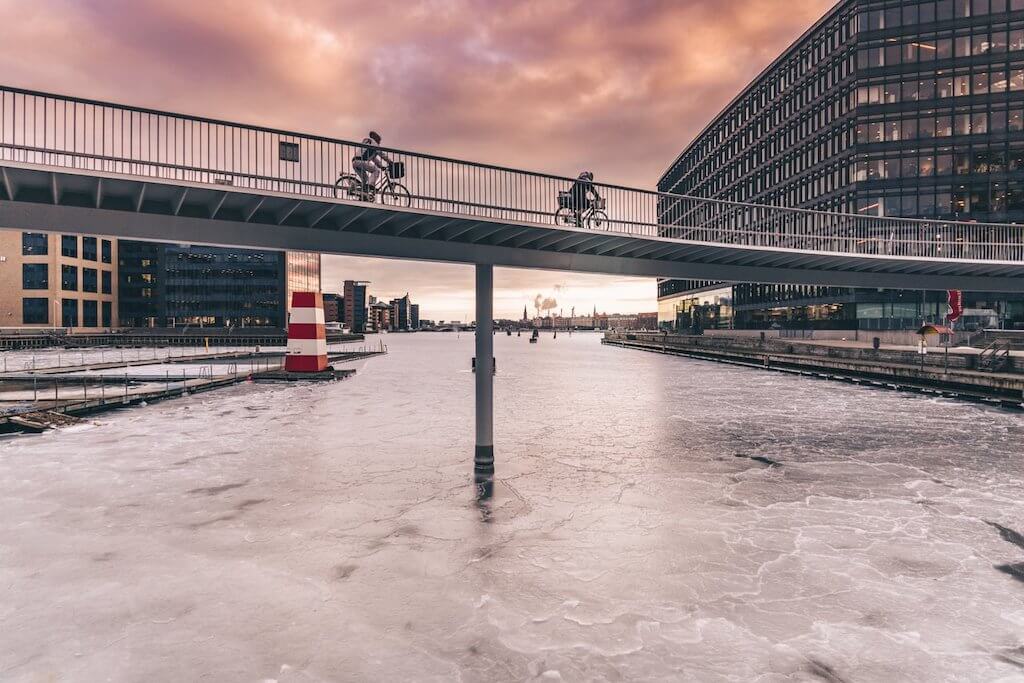
Beneath Tokyo’s teeming streets lies the Eco Cycle System, an underground bike parking facility that leverages automated conveyor technology to address the city’s acute space constraints. With a simple card swipe, cyclists can store or retrieve their bikes within seconds, exemplifying Tokyo’s dedication to combining sustainable urban design with user convenience.

In Nuenen, the Netherlands, the Van Gogh Path pays homage to the Dutch master Vincent van Gogh. Inspired by his iconic painting “Starry Night,” this bicycle path, designed by Studio Roosegaarde, is embedded with thousands of twinkling stones that light up at night, turning a simple bike ride into an enchanting journey through art and space.
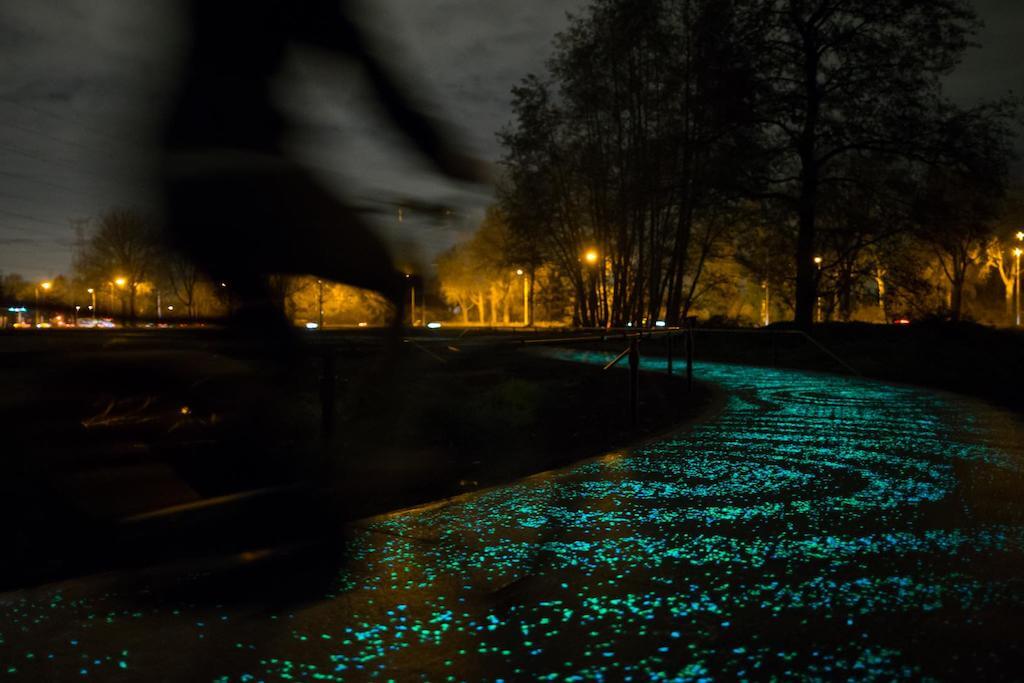
Van Gogh Path (Studio Roosegaarde)
The Fyllingsdalen Tunnel in Norway stands as the world’s longest purpose-built tunnel for pedestrians and cyclists. Stretching over 3,000 meters under Bergen’s rugged terrain, it offers a safe, direct route for cyclists, highlighting Norway’s innovative approach to integrating infrastructure within its natural landscapes.

In Limburg, Belgium, the Cycling Through Trees path takes riders 10 meters above the forest floor on a 700-meter loop that offers an immersive nature experience. This unique treetop adventure highlights Belgium’s commitment to innovative, biodiverse-friendly cycling infrastructures.
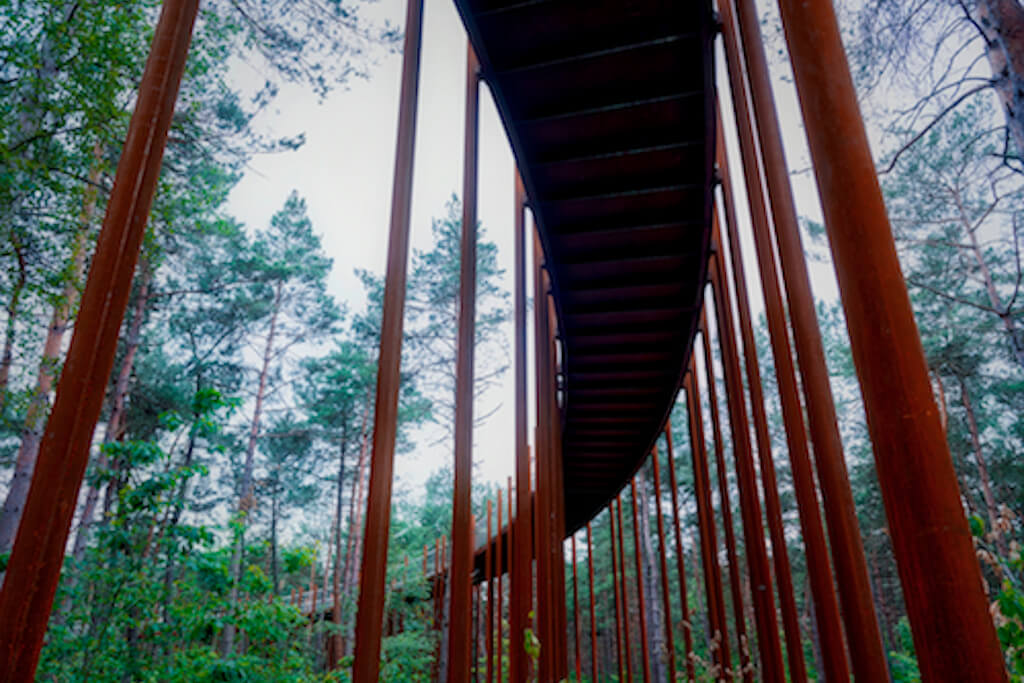
Cycling Through Trees in Belgium
Amsterdam recently unveiled an underwater bicycle parking garage at the Open Havenfront, capable of accommodating 7,000 bikes. This facility not only protects bikes from the elements but also integrates seamlessly with nearby public transport options, enhancing the city’s robust cycling ecosystem.
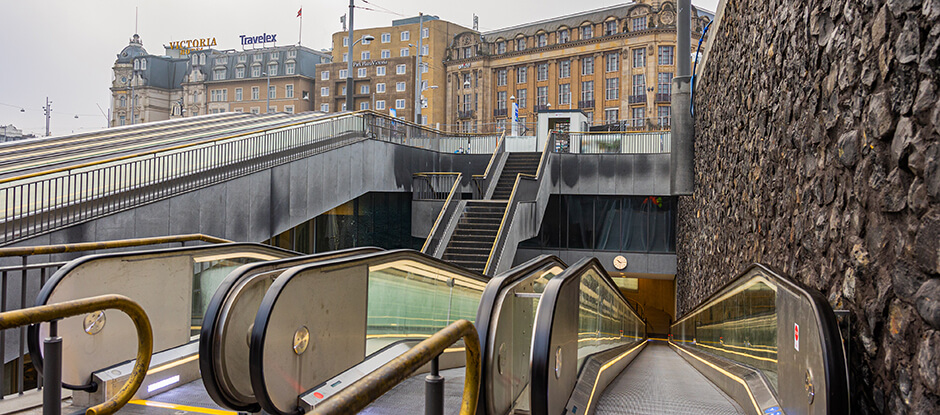
Entrance to bike parking shed
Seoul features a distinctive solar-powered bike path, located in the middle of a highway. Opened in 2014, this 13-foot-wide path is lined with 7,502 solar panels, demonstrating South Korea’s innovative use of technology in promoting sustainable urban transport.
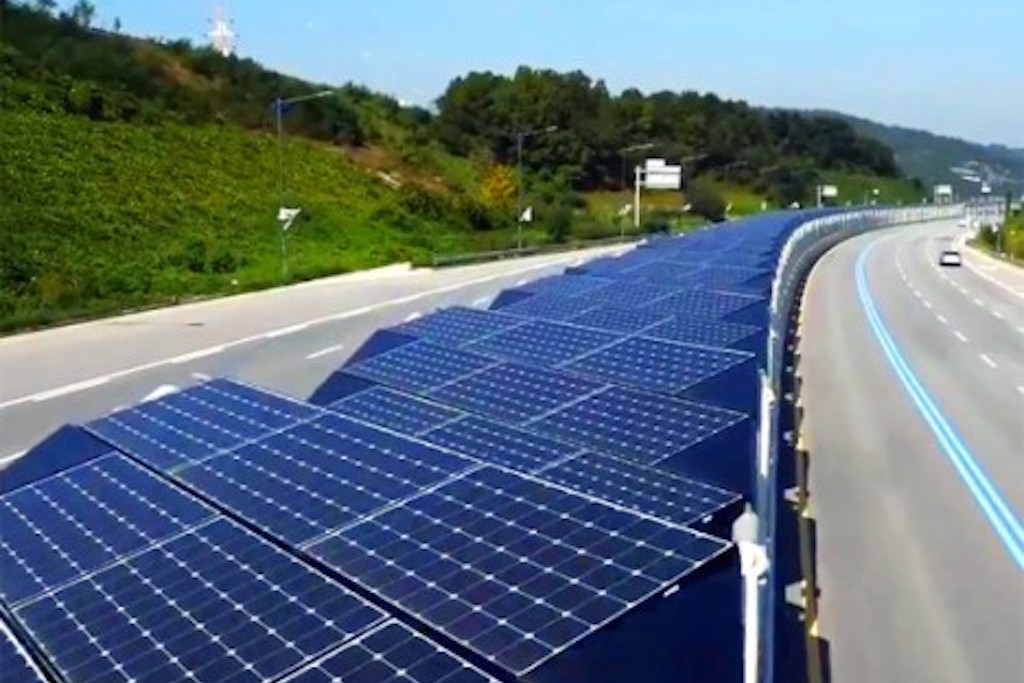
Seoul solar bike path
These examples from around the world illustrate how cities are embracing cycling as a cornerstone of urban transport. From Copenhagen’s elevated pathways to Tokyo’s subterranean innovations, and from the artistic lanes in the Netherlands to the high-tech solutions in Seoul, the global landscape of urban mobility is evolving. Each cycling infrastructure project not only supports the practical aspects of bicycling but also enriches the urban experience, pointing the way to a future where pedal power is a mainstay of city life.
Find inspiration in our Gear Guide that will keep you out on your bike through wind or rain.
Download Now
Leave a comment